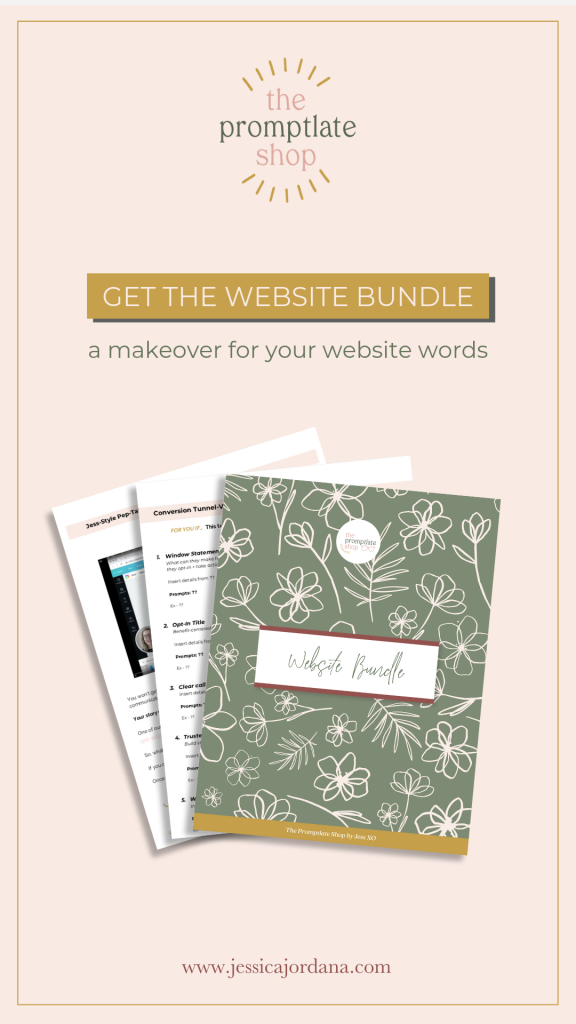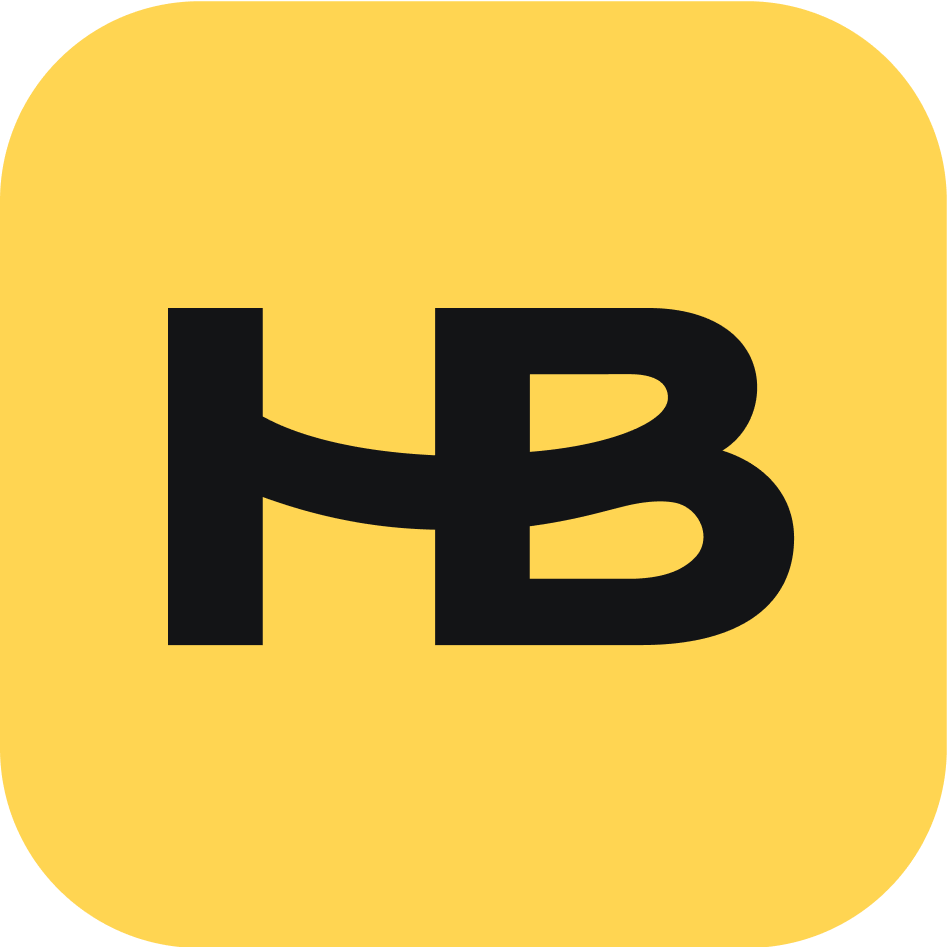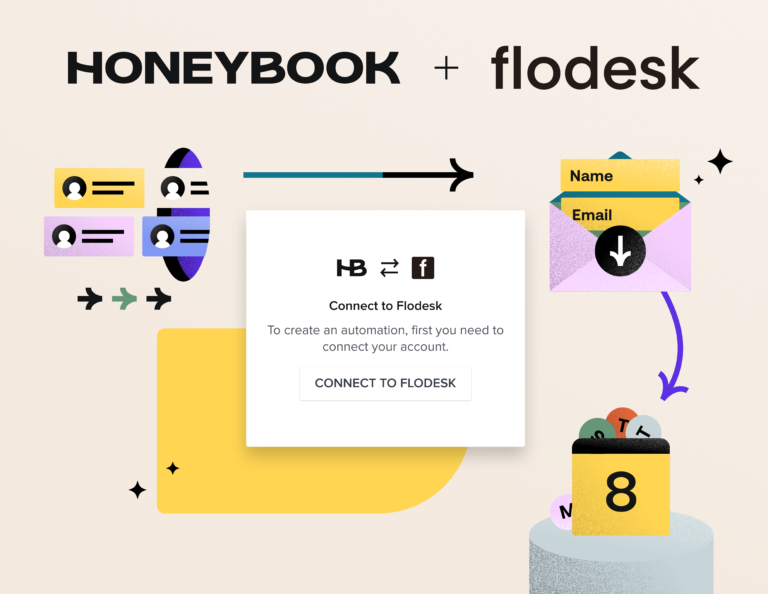This post is part of our new Real Life Diaries of an Entrepreneur series. Copywriter Jess Jordana Paxson of Jess, XO pulls back the curtain on the ins and out of scaling her business. Since starting in 2018, she’s quadrupled her monthly income by continuously trying new things. Follow along to learn what worked, what didn’t, and what she’s trying next.

In case you missed the rest of the series:
2 | Running Facebook Ads: Why I decided it was time to start
The story of this launch actually started long before I had a business…
…WAY BACK WHEN I tried to write a course in a vacuum.
I’m not even sure if it does it justice to say “in a vacuum,” because most people who say they create a course like that are just saying that they didn’t talk to anyone in their audience about it.
You guys. I didn’t HAVE an audience. I didn’t even have a business.
The course title was going to be “words matter,” and the reason I wanted to create the course was 1) because words do matter, and 2) it sounded super freakin’ cool to create a course.
A cool four and a half years later, here I am to tell you the tale of my first launch. And I can promise you two things.
- I do have a legal business. (Praise be.)
- This product was created out of desperate need and high demand, not a “because I want to” kinda mindset.
I’ve learned to attract the right people, book them for projects (with the help of streamlining tools like HoneyBook), deliver results, and repeat. But, when it came to scaling, I knew NOTHING.
I learned a lot over this process, so I’m going to share it all with you. I’m pulling back the curtain on a REAL FIRST LAUNCH… because someone had to!
Wanna swipe the sweetest sales system?
If you’re ready to capture, connect, and convert your dream people on AUTO (I mean, who isn’t?), you can get 50% off of your first year of HoneyBook from Jess. Start free trial.
Start free trialWhat I launched
I’ve been super blessed to have been booked out at least three months in advance since my first week in business. The shadow-side of being booked out is the straight up DISAPPOINTMENT coming from your inbox when you have to tell inquiries, “Sure, I’d love to work together on this project in 3-4 months!”
It kills me. And it takes the wind out of their sails, too.
The second issue I found in my first year of business was this: Raising my prices was a must. So while not everyone could work with me, I still desperately wanted a way to help people who were struggling with their message + writing captivating copy for their websites.
(Read: Almost every creative business owner, ever.)
BUT, I didn’t want to create a course. I knew my people needed something that was as easy as possible.
ALSO, I’m morally against straight-up templates. The reason people want better copy is because it already looks like everyone else’s.
So, finally (with the help of my mastermind), I came up with the idea of The Promptlate Shop.
50% prompts + 50% templates = 100% more connection + more clients with your copy.
It’s a collection of digital products to address your specific needs for each page of copy that needs a major (Princess-Diaries-Style) makeover.

How I prepped
After I got home from my mastermind retreat in March, it was GO TIME.
For me, prepping was the simplest and most fun part of launching.
I like to make plans, and my plans always really like me. We’ve got a good thing goin’, ya know?
There were two major things I focused on in the Prep Phase, that I think everyone should do.
Step #1: Validate + Create + Beta-Test the Product
In that order. Be sure to never start creating your product without validating first.
If you create FIRST, you might risk a unique value proposition like: Words matter because they do. Not that I’m speaking from experience, or anything.
Validation:
In my case, I had some big questions I wanted my audience to answer for me. I knew they needed help with copy, but I wanted to know:
Why hadn’t they found help already?
If they tried something, what was missing? What didn’t work?
What did they actually want, in a perfect world, and how could I help them get there?
Creation:
This phase was really about putting my nose to the grindstone. As a former teacher, curriculum design is my jam, so I got to work right away.
If you’re not as familiar with curriculum and learning design, let me help you get started.
Always start with the end in mind. What do you want them to leave your program or offer knowing how to do? What will they accomplish?
Create checkpoints along the way. From that “end” that you have in mind, then create small checkpoints that ensure they’re headed in that direction.
Fill in the rest + edit ruthlessly.
Dr. Seuss wrote, “So the writer who breeds more words than he needs, is making a chore for the reader who reads.”
Remember that when you’re editing. Are you creating something that will transform lives or that will become a chore for those who take advantage of it?
Sometimes editing can – and should – feel slightly like chopping off a limb. It’s fine. Everything’s fine. Promise.
Beta-Testing:
The goal of beta-testing is not only to test the whole product or offer, but to refine little pieces of it.
Think, CONTENT, FORMAT, OUTCOME.
Ask your people who jump in both open-ended questions as well as questions geared toward the specifics you need to flesh out.
Also, feel free to be picky in the beta-stage. Choose people who you know are ready to dive in right now and get the results.
Step #2: Create a Launch Plan
To learn about launch plans, I wanted to learn from none other than the best launch copywriter I know (and kinda my girl-crush), Ashlyn Carter. I binge-watched Ashlyn’s Primed to Launch course, and used her framework to create my launch plan.
This involved crafting pre-launch blog posts as the hub for my content, and using those posts to create Instagram captions, Instagram Story tutorials, email newsletters, etc.
I really prepped my list, and grew it a bit during the pre-launch phase. I would say it paid off.
My email list converted at 30% during launch week.
That means, out of my entire (small, but mighty) list, 30% of subscribers purchased. Typical sales conversion rates hover around (but mostly under) 10%, during a launch. So, those numbers meant that my list was highly engaged and properly nurtured to be ready for the offer I dropped.
Like a boss.
What I learned
This launch was not an open cart + close cart style strategy. We’ll get more into that a bit later, but it’s worth mentioning here, too.
In other words, I didn’t have built in urgency that said, “You can ONLY get in on this offer this week, and then the cart closes.”
Most course launches function on an open cart + close cart strategy, whereas digital products and evergreen offers need to find other ways to create urgency.
I think the evergreen-style of my launch helped in a few ways, and hurt it in a few others. Overall, I learned that just calling something “a launch” doesn’t mean you have a strategy behind it. And, without getting clear on your strategy, you’re going to be left confused when it comes to last minute decisions.
I made the last minute decision (read: one week before launch!) to switch a few BIG things around. I’m glad I did, but I learned a lot.
Switch #1: ConvertKit >> Flodesk
This was, quite honestly, a tough call for me as a copywriter. I’ve worked like crazy to build my list to what it is now, to nurture them, segment them, all that jazz… but ULTIMATELY, it came down to this: When these people get my email during launch week, how likely will they be to actually click?
The reality with ConvertKit is, when it comes to design, you have to be a bit of a genius to get everything to look pretty, but also simple enough for people to read it, feel connected, and take action.
For me, Flodesk’s email designs helped to take the guesswork out of “click here now.” It also helped to continue drawing the eye down the page to additional information (like bonuses + launch week exclusives) that I wanted people to see and be aware of.
The goal as a content creator is to craft engaging content that solves the problem of your audience, yes. But, additionally, your job is to eliminate any barrier to action from your readers, so they have no choice but to take the next step or actually choose not to.
When you eliminate the possibility of indifference, you’ll notice that your people engage more with your content. If they don’t, it’ll be easy to recognize that they’re not interested instead of maybe just confused.
I had lots of people comment on how much they loved my emails made with Flodesk during launch week.
Pro Tip: When people reply to tell you how awesome your email is, that tells the email voodoo gods that you are a valuable sender, because people are taking action. Cool, right?
Wanna hear more of my copywriter-perspective on Flodesk? Check out my grad-level-thesis-style analysis on Flodesk (and a tutorial!) if you’re ready for more.
Ready to try it for yourself? Click here.
Switch #2: Squarespace shop page + janky-rig delivery >> Kajabi
In the months leading up to the shop launch, I had every intention of hosting my shop straight through Squarespace, and setting up an automated delivery to trigger through my email provider when a purchase went through.
It would function much like getting a freebie download, but the process as a whole just felt really janky.
When any of my industry friends would ask me how I planned to do it, I would explain and then trail off with… “It’ll probably be fine for this first launch because I’m not expecting a ton.”
OOF.
It wasn’t until a designer reached out to me about a bulk order, and then two more designers reached out to me about an affiliate program that I realized:
I think I’m trying to play small, here.
In playing small, I was making it complicated. What would it hurt if it was a complicated process, if only 1-2 people bought, right? I was stunting my growth before I ever even started, so I decided to shift.
If this were easy, what would it look like?
My systems + business coach, Chelsea B. Foster, told me that Kajabi was probably my best long term option. It had the ability to house all of my products, conduct the sales process, and also to set up a super-simple affiliate program.
This type of platform was new for me!
I use HoneyBook to streamline everything in my copywriting business day-to-day, but when it came to scaling, I had to look elsewhere for tools that would be just as easy for my new customers as HoneyBook is for my clients.
Side Note: It’s worth mentioning that, yes, Kajabi also has email marketing built in. And, yes, I decided to still use Flodesk, because it’s super affordable, it gets me INTO more inboxes, my open and click rates increased, they’re affordable, and I’m obsessed with the women behind the company (shoutout to Martha and Rebecca!). You should really check it out.
Another Side Note: Kajabi is not a tiny fee. It’s definitely an investment. BUT, I knew I would make that investment back and then some, especially if it was easier for people to buy and use The Promptlates. And, remember, for ANY AND EVERY small business platform, there’s usually a friend with a referral code to make it much more affordable, and it’s a business expense, so you can write off that edge, a bit. (Here’s my code in case you want to get Kajabi for a killer price (and 28 days fo’ free)!)
These two switches, though they were a bit labor-intensive, were GAME CHANGERS when it came to launch week being SMOOTH.
I mean, I was expecting to be in customer service all week, getting nothing done. But, I actually got bored enough that I started doing client work for fun after I was done making muffins, because everything else ran like clockwork.
What was hard
No one tells you that the first day of a launch is HARD. I mean, nobody told me, either!
So, when I had a slower first day than expected, I reached out to some industry friends, and I got responses like this:
“OMG, girl. I cry on the first day of launch. Every. Time.“
“Yeah, the first day always sucks. It’s like a rite of passage.“
Here’s the thing. Very few people are early-adopters by nature. So, especially if your offer is NEW NEW (like, invented a word, new… in my case), you need to expect a bit of a lag when it comes to putting their money where their interest is.
It takes 7 touchpoints to create a viable sales lead. I talked about this in detail in my interview with Davey Jones from the Brands that Book Podcast, BUT… I guess I forgot about it when it comes to my own business?
Things went just about as well as they possibly could have because THE WORLD needed to know what a Promptlate was (prompts + templates = promptlates… get it?), and why they needed one. Mission accomplished.
Lesson #1:
Everyone buys on the last day of launch.
(or at least THE MOST people usually do)
Lesson #2:
Keep that in mind, and create some killer urgency with an extra bonus or two on the last day.
Bottom line is, our audiences are getting smarter than ever before because they’re being sold to more than ever before. It’s time to step up our game. Not in a tricky sorta way, but in a serving over selling kind of mindset. Give them so much value, they feel like they are getting a total steal.
Long-game product vs. close-cart offer
Like I said before: You have GOT to know your strategy before you start prepping for launch. If you have a close-cart-style offer, you need everything to build hype until open cart, and then it’s GO TIME, for a short period of time.
For example, Amy Porterfield’s latest launch of the Digital Course Academy had an open cart date and a close cart date. She only opens enrollment for a short period of time once or twice a year.
So, you better believe she is strategic about warming her audience up with podcast episodes and FB lives in the weeks prior to open cart. Then, she further delivers value (and makes the pitch for them to enroll) by utilizing webinars during launch week.
For a Close Cart Offer
If you’re doing a true open cart + close cart launch, do your best to stick to the plan at all costs. If you go adding bonuses and changing everything mid-launch, people will know something’s up and it’s not going as planned. You learn from each and every launch, so wait till cart-close, analyze, and start making your plan for the next open cart.
For an Evergreen Offer
If you have more of a long-game-type offer, like a digital product or simply an open enrollment offer, there’s not quite as much pressure on the launch week, itself. In fact, if you put all of your eggs into the launch basket and have no plan for the long-game? You might be kicking yourself in the future. The goal of this style of launch is to raise awareness, get people talking, and start accumulating some great social proof, so you can continue to get people in the door with those stories.
For me, The Promptlate Shop is the long game. I primarily speak to designers who need good copy from their clients in order to craft a design that will convert, OR to business owners who are in the thick of revamping or creating a brand new website.
The purpose of launch week for me was less about making half-a-year of income, or the ever-buzzwordy “6-figure launch!” Launch week was more about building momentum and creating awareness, and setting the shop up for success in the future.
Unpopular Opinion Alert
If at all possible, try not to launch something for the first time that is make-or-break for your income.
I know you want passive income. I know it sounds super sexy, and everyone’s doing it. But, if you’re launching out of desperation, it’s going to be literally the worst ever. You’ll be putting out desperate energy instead of confidence, and you’ll wonder what you’re doing wrong.
Key Takeaway: Instead, build the heck out of your services or your primary offer, and streamline those as much as possible.
Then, use the extra time to figure out what the people want, give it to them, and feel confident that whatever comes in is gravy on top of your already well-built business.
What went well
Community + Hype
Whoever calls themselves a “self-made” anything is not giving credit to their hype team. I had 25 sweet friends in the industry share about the shop. Yep, I counted them and thanked each one individually. If you want to go far, go together.
Just like Chase Jarvis said a few weeks ago: It’s not enough to create something, you have to call on your community to amplify it. Community came through big for me on this launch, and I’m always so grateful for this tribe.
Key Takeaway: Reach out early and often for your people to come alongside you. Make sure you give them ample time to work it into their content calendar + flow, and give them all the tools to be able to share quickly and easily!
RESULTS don’t lie
I had some of my beta students share their results from The Promptlates, and that was by far the most powerful sales strategy. People aren’t questioning if you are enough, or if your product is enough, they’re questioning if they have what it takes to get results. Show them they have what it takes.
Key Takeaway: If you haven’t gotten proven results yet, you might be wasting your time making all of it pretty. Just sayin’.
I executed my plan!
Brene Brown’s book Daring Greatly was inspired by this Teddy Roosevelt quote:
“It is not the critic who counts… The credit belongs to the (wo)man who is actually in the arena, whose face is marred by dust and sweat and blood; who strives valiantly; who errs, who comes short again and again, because there is no effort without error and shortcoming; but who does actually strive to do the deeds; who knows great enthusiasms, the great devotions; who spends himself (or herself) in a worthy cause; who at the best knows in the end the triumph of high achievement, and who at the worst, if he fails, at least fails while daring greatly.” – Theodore Roosvelt
I made a plan. I stepped in the arena. That feels like a win to me.
Key Takeaway: Make a plan. Step in the arena. Celebrate. Repeat.
So, you might be wondering, Jess, what do you do after a launch?
What I plan to do next
Get back to my bread and butta: Client work!
I love the fact that entrepreneur-life means a whole lot of ebbs and flows. It keeps things interesting! BUT, I definitely thrive on routine, and it has been so sweet to get back to my typical batch-working, client-focused schedule. My one-on-one client work is where I get to go really deep with my people, and while I love dreaming up ways to do that on a larger scale, I want to cherish my client work as the privilege it is.
REST.
I always have plans to rest. You, too? Since I physically cannot nap, rest for me looks like engaging in activities that use a totally different part of my brain than all my business, CEO, and overall badassery.
I’m planning to do things in the next month or so, like…
- Master the at-home PSL.
- Bake muffins.
- Read fiction.
- Eat vegetarian for a day.
- Prep for the annual pumpkin-carving party.
- Dream up some new, fun client gifts.
What does true rest look like for you?
Experimenting with strategies for an evergreen product
Including… Facebook Ads!
Alright, I’m going to just be honest here – ‘cause this is the REAL LIFE DIARIES – I’m a little nervous to look into some of these Play Big strategies.
Launching a product or program is a totally different game than being 100% service-based, and there are a lot of things you can do. I’m spending the next month or so experimenting with a few “can-do’s” so I can figure out the “must-do’s” for my business.
I’ll experiment with email sequences, creating content, and doing some paid promotion to figure out what my readers – hopefully you! – need from me, and how I can serve them and reach them best.
One thing I DO NOT love is making decisions in a sea of options!
So, tune in next month to hear what I learn about promoting a product outside of a launch, and serving my clients well all while onboarding a new team member and planning for 2020. SEND ICED COFFEE. It’s gonna be a good time!
Until then, if you have any questions for me about launches, growing a business, or anything, I’d love to chat!
Ready for the second installment of The Real Life Diaries with Jess? We fully support binge reading. Catch it here!



